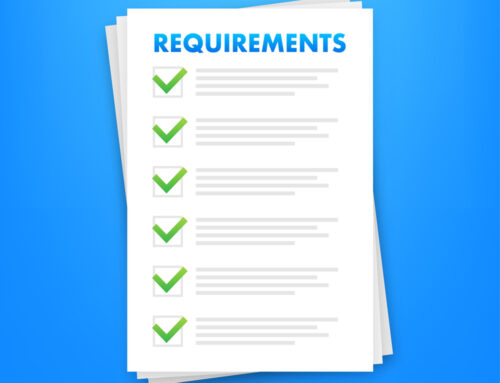 Test-optional. Test-flexible. Test-blind. The terms themselves are confusing, and recent shifts in colleges’ policies are even more so. If you’re a high school student, or the parent of one, you may feel like you’re experiencing whiplash in trying to keep up with the ever-evolving test requirements at U.S. colleges. Before discussing recent changes, however, first I want to explain what those aforementioned terms mean.
Test-optional. Test-flexible. Test-blind. The terms themselves are confusing, and recent shifts in colleges’ policies are even more so. If you’re a high school student, or the parent of one, you may feel like you’re experiencing whiplash in trying to keep up with the ever-evolving test requirements at U.S. colleges. Before discussing recent changes, however, first I want to explain what those aforementioned terms mean.
Test-optional means that a college does not require applicants to submit ACT/SAT scores, but applicants can do so if they would like. In theory, students who don’t submit scores will not be at a disadvantage in the admissions process. In practice, however, at least at some colleges, it appears to be a different story.
Test-flexible means that a college requires scores but will accept other tests in in lieu of the ACT/SAT. For example, students may be allowed to submit AP or IB scores.
Test-blind (also called test-free at some institutions) means that a college will not consider scores even if a student submits them.
For several years prior to the COVID-19 pandemic, a growing number of U.S. colleges became test-optional. When the pandemic started, College Board (which designs and administers the SAT) and ACT were forced to cancel several test dates. Colleges understood that it would be unfair to require scores from students who had limited or no opportunities to take these tests, so in response, most became test-optional, at least temporarily.
One of the most prominent arguments in favor of test-optional policies is that they help level the admissions playing field for underrepresented minority, first-generation, and low-income students. White, Asian, and high-income students have higher average ACT/SAT scores than do Black, Latino, and lower-income students. There also is a correlation between students’ scores and their parents’ level of education. Furthermore, students from wealthier families can afford to pay for test prep, whereas students from lower-income families are less likely to have access to such assistance.
In January, the New York Times published an article that, to some extent, blew the above arguments out of the water. While acknowledging the aforementioned data on test scores, the author, David Leonhardt, pointed out that scores are hardly the only factor in college admissions in which there are inequities: “Affluent students can participate in expensive activities . . . that strengthen their applications. These same students often receive extensive editing on their essays from their well-educated parents. Many affluent students attend private schools where counselors polish each student’s application.”
Leonhardt also mentioned the widespread increase in grade inflation, which we discussed in a recent blog post. Leonhardt cited a 2023 study of the “Ivy-Plus” colleges (the eight schools in the Ivy League, as well as Duke, MIT, Stanford and the University of Chicago) that “showed little relationship between high school grade point average and success in college. The researchers found a strong relationship between test scores and later success.”
Leonhardt wrote, “the data suggests that testing critics have drawn the wrong battle lines. If test scores are used as one factor among others — and if colleges give applicants credit for having overcome adversity — the SAT and ACT can help create diverse classes of highly talented students.”
As an example, he pointed to MIT, which was one of the first colleges to reinstate test requirements after going test-optional in 2020. Leonhardt wrote that MIT’s admissions officers “find the scores useful in identifying promising applicants who come from less advantaged high schools and have scores high enough to suggest they would succeed at MIT.” After MIT went back to requiring scores, the university admitted the most diverse class in its history.
Leonhardt’s article seemed to spur more colleges to bring back test requirements. Since its publication, several of America’s most selective private and public colleges have announced they will require test scores in the upcoming admissions cycle. Meanwhile, other schools have said they will extend their test-optional policies for a specific or indefinite period of time, while still others have made their test-optional policies permanent.
For high school students, especially those who are current juniors, keeping up with all of the changes may feel overwhelming. It’s hard to decide whether to take the SAT or ACT when you don’t know if the colleges you’ll end up applying to will require scores. Although it’s starting to feel rather late in the game for colleges to change their policies for the 2024-2025 cycle, both Harvard and Caltech announced in April that they would return to requiring scores. I wouldn’t be surprised if more such announcements occur in the next month or so.
There are some websites where you can look up colleges’ test policies. Fair Test maintains a list of over 2,000 colleges that are test-optional and test-free, and Insight Education lists the policies of over 270 colleges, including those that require scores. However, I have found mistakes on both sites, so I would encourage you to use these as a starting place but then check each college’s website for its policy. (Insight Education’s list includes links to colleges’ websites, which is helpful.)
At Discovery College Consulting, we encourage all of our students to take the ACT or SAT at least once. Even if all the colleges they end up applying to are test-optional, taking the test(s) gives students the power to decide whether or not to submit their scores, and we advise them on where to submit and where not to submit. But if you don’t test at all, you are essentially relinquishing the opportunity to provide colleges with information that could help you in the admissions process.





